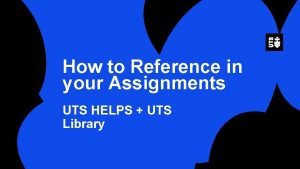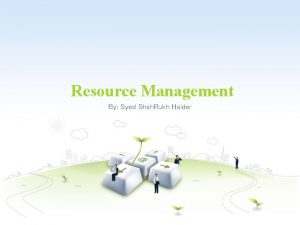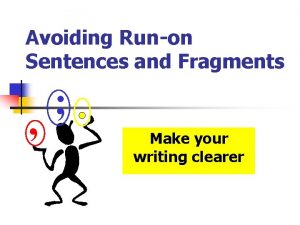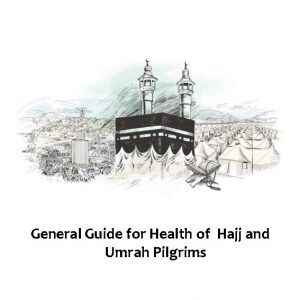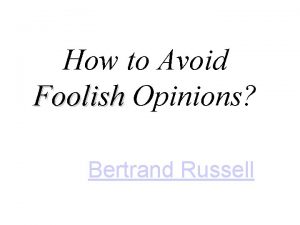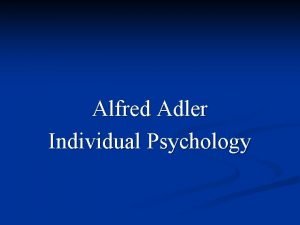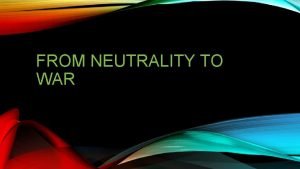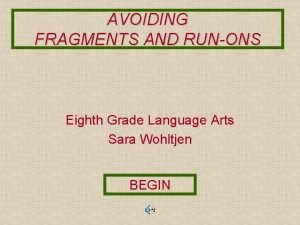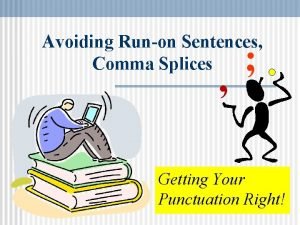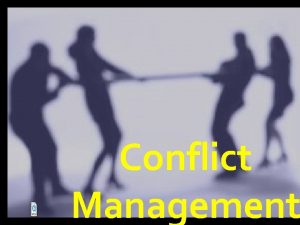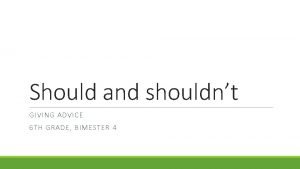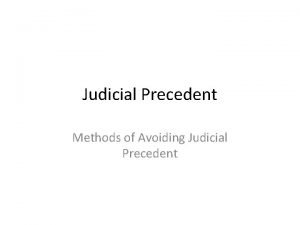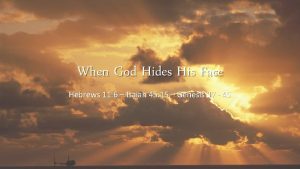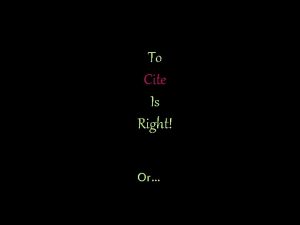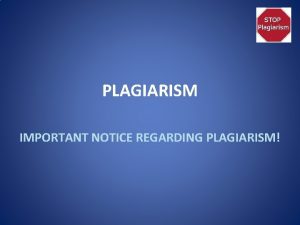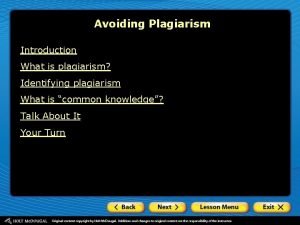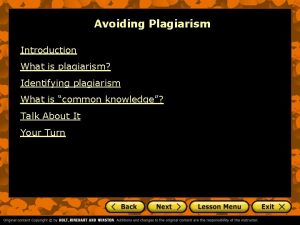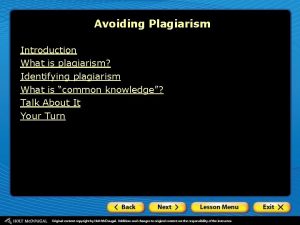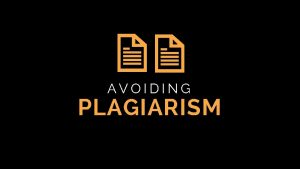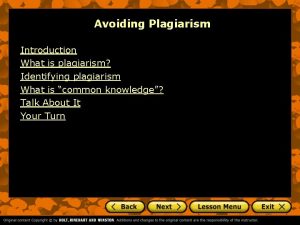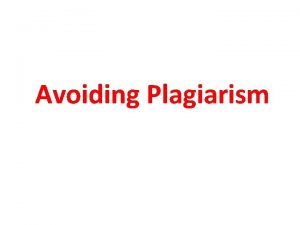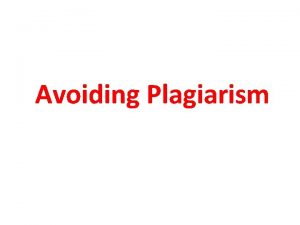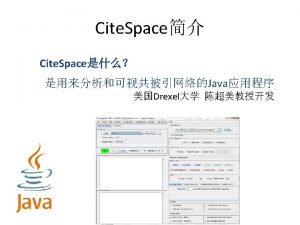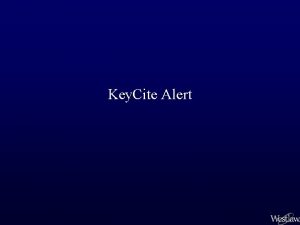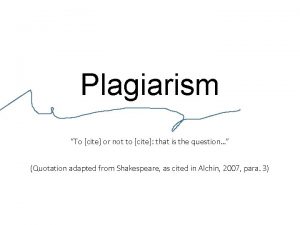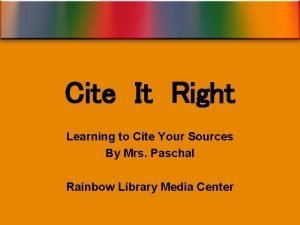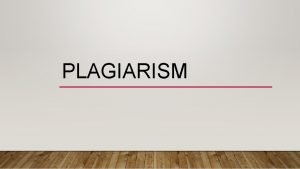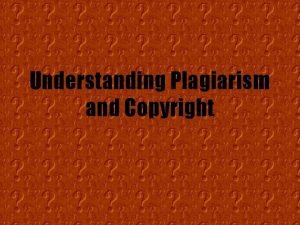To Cite Is Right Or Avoiding Plagiarism Pleasing









![Another example: As Julius Smith notes, “[i]n 2 D, the Pythagorean Theorem says that Another example: As Julius Smith notes, “[i]n 2 D, the Pythagorean Theorem says that](https://slidetodoc.com/presentation_image_h/91b73200ad2980db4c3217131956350a/image-10.jpg)











- Slides: 21

To Cite Is Right! Or…

Avoiding Plagiarism, Pleasing Profs, & Living an Academically Honest Life

What is plagiarism? Plagiarism is using the words, ideas, research results, formulae, images, or data from another person without giving credit to the originator of those words, ideas, research results, formulae, images or data

Many students feel that by using footnotes, endnotes, or citations their papers will not be as good as papers that make fewer references to other works. But this conclusion is just plain wrong…

In fact, the student who cites sources where appropriate guarantees a better grade than the student who writes a paper without adequately giving credit to the source material! Paper with citations—no plagiarism No citations—plagiarized material

Why? !? By providing citations to other works, a writer is showing how he or she is entering into the conversation of a given field, building upon what’s already been said and adding his or her own voice.

When do you need to cite a source? Whenever you use the • words (written or spoken) • ideas • formulae • research results • images or • data of another person--unless that information is common knowledge

What is “common knowledge? ” “Common knowledge” is anything that is considered known by the vast majority of the population—or found in generalized encyclopedias and/or dictionaries. Examples include: • Chicago is the largest city in Illinois • a 2 + b 2 = c 2 In those examples, you would not be expected to cite the census or Pythagoras.

Example of when you would be expected to cite a source: When you’re including information that isn’t common knowledge, you would want to cite it: William Butler Ogden, the first mayor of Chicago, designed the first swing bridge over the Chicago River (By. City. Light, 2). The complete reference for this source would then be found at the end of the paper in the “Works Cited” page: “Chicago, Illinois. ” By. City. Lights. com. 31 October 2007 <bycitylights. com/cities/us-il-chicago-history. php>.
![Another example As Julius Smith notes in 2 D the Pythagorean Theorem says that Another example: As Julius Smith notes, “[i]n 2 D, the Pythagorean Theorem says that](https://slidetodoc.com/presentation_image_h/91b73200ad2980db4c3217131956350a/image-10.jpg)
Another example: As Julius Smith notes, “[i]n 2 D, the Pythagorean Theorem says that when x and y are orthogonal… then we have: ║x+y║ 2 =║x║ 2 + ║y║ 2 (x┴y). ” (Fourier Theorems) The “Works Cited” page would include this citation: Smith, J. O. "Fourier Theorems for the DFT" in Mathematics of the Discrete Fourier Transform (DFT) with Audio Applications, 2 nd ed. 2007. 31 October 2007 <http: //ccrma. stanford. edu/~jos/mdft/Fourier_Theorems_ DFT. html>.

It’s fairly obvious that copying directly from a source without using quotation marks and not providing a citation is plagiarism. What about when we copy from a source and change a few words (i. e. , paraphrase) without indicating its originator? This is also plagiarism.

Why is paraphrasing plagiarism? If you steal your roommate’s pillow and put it in your pillowcase, it is still your roommate’s pillow, right? It’s no different if you take an idea from someone else—it’s still their idea, not yours.

To Cite Is Right!

Thought problems Properly using citations in a research paper ensures a better grade than not using any citations. T / F WHY?

As long as you have a Bibliography/Works Cited/Works Consulted page, you will not need to use footnotes or endnotes or parenthetical references. T / F WHY?

“Tobacco use was significantly higher among white students (P<. 001), users of other substances (alcohol and marijuana) (P<. 001), and students whose priorities were social rather than educational or athletic (P<. 05). ” (Rigotti, Lee and Wechsler, 699) The above statement was taken from a scholarly journal. If a student were to include the sentence on the right in a research paper, would it be considered plagiarism? Students who use alcohol or marijuana are more likely to use tobacco. Plagiarism or not?

“Tobacco use was significantly higher among white students (P<. 001), users of other substances (alcohol and marijuana) (P<. 001), and students whose priorities were social rather than educational or athletic (P<. 05). ” (Rigotti, Lee and Wechsler, 699) Using the same sentence, above, determine whether the student’s statement on the right would be considered plagiarism or not. Athletes are not as likely to use tobacco as those students who attend college with the aim of meeting friends. Plagiarism or not?

To Cite Is Right!

When in doubt… • Ask your professor! • Ask at the Writing Center! • Ask a librarian! We all want to see you succeed!

Works Consulted “Chicago, Illinois. ” By. City. Lights. com. 31 October 2007 <bycitylights. com/cities/us-ilchicago-history. php>. “Defining and Avoiding Plagiarism: The WPA Statement on Best Practices. ” Online posting. 22 October 2007 <http: //wpacouncil. org/positions/plagiarism. html>. Moulton, Janice and George Robinson. “Plagiarism” Encyclopedia of Ethics, 2 nd ed. New York: Routledge, 2002. “Plagiarism. ” Online posting. 25 October 2007 <http: //www. unc. edu/depts/wcweb/handouts/plagiarism. html> Rigotti, Nancy A. , Jae Eun Lee, and Henry Wechsler. “U. S. College Students’ Use of Tobacco Products. ” Journal of the American Medical Association 284 (2000): 699705. Stepchyshyn, Vera and Robert S. Nelson. Library Plagiarism Policies: CLIP Note #37. Chicago: American Library Assocation, 2007. Smith, J. O. "Fourier Theorems for the DFT" in Mathematics of the Discrete Fourier Transform (DFT) with Audio Applications, 2 nd ed. 2007. 31 October 2007 <http: //ccrma. stanford. edu/~jos/mdft/Fourier_Theorems_DFT. html>.

Created by: Jean Mac. Donald Ames Library
 Uts apa
Uts apa Right product right place right time right price
Right product right place right time right price Right time right place right quantity right quality
Right time right place right quantity right quality The right man on the right place at the right time
The right man on the right place at the right time Hr department structure
Hr department structure What is a run-on sentence? *
What is a run-on sentence? * Avoiding the sun
Avoiding the sun Chapter 12 lesson 1 benefits of physical activity
Chapter 12 lesson 1 benefits of physical activity How to avoid foolish opinions important points
How to avoid foolish opinions important points Adler birth order
Adler birth order Avoiding insider trading training
Avoiding insider trading training A national policy of avoiding involvement in world affairs
A national policy of avoiding involvement in world affairs Conflict management styles owl fox
Conflict management styles owl fox Demographic parity
Demographic parity What's the best strategy for avoiding atm fees?
What's the best strategy for avoiding atm fees? Avoiding fragments and run-ons
Avoiding fragments and run-ons Avoiding run on sentences
Avoiding run on sentences Shark leadership style
Shark leadership style Complete the introduction giving advice on avoiding
Complete the introduction giving advice on avoiding Positions in nursing
Positions in nursing Evans v triplex safety glass
Evans v triplex safety glass When god hides you
When god hides you
